Gastronomy of CHIHUAHUA
Cover photo by foodandtravel.mx
Typical Food of CHIHUAHUA
Chihuahua has developed a unique gastronomy that has its roots in the extreme climate and strong livestock production of the region. Most of the regional dishes are made with beef, with the white-faced Brangus, Angus, and Charolais breeds being particularly renowned. Fine cuts of meat are typically served with baked potatoes and grilled onions in restaurants.
The settlers of Chihuahua faced a challenging environment, with short harvest periods and extreme weather conditions. To preserve and store food, they developed the custom of dehydrating and drying grains, vegetables, fruits, and meats. This method not only ensured a supply of food during cold seasons and droughts, but also resulted in a unique and flavorful cuisine that is still celebrated today.
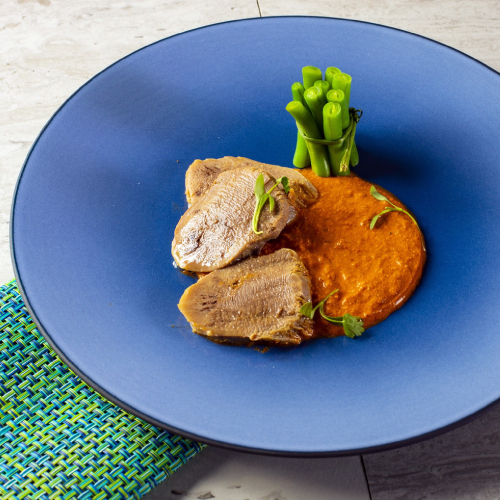
The landscape of Chihuahua is dominated by mountains and steppe, and agriculture arrived late in the region. As a result, the culinary traditions of the area were initially poor and scarce. However, the colonizers who arrived in Chihuahua found vast uninhabited spaces and engaged in activities such as mining, soldiering, and cowboying that did not involve women. The mestizo cuisine of Chihuahua, therefore, was developed primarily by men with limited culinary knowledge.
Despite these limitations, the Chihuahuan people developed a specific way of cooking and seasoning their dishes that has become characteristic of the region. The cuisine of Chihuahua is renowned for its use of dehydrated and dried ingredients, such as fresh dried corn and dehydrated green chili used to prepare stews.
Beef is a staple ingredient in Chihuahuan cuisine and is of excellent quality. Carne asada, a dish made with seasoned and grilled beef, is a typical and popular dish. Arrachera meat, a cut of beef from the abdominal muscles of the cow that has been marinated to achieve a buttery texture, is another favorite. Dried meat, known as “machaca,” is an important dish in the region and is commonly eaten for breakfast. It is typically made with pork or beef, dried spices, and mixed with eggs, tomatoes, onions, and sauce.
Chihuahua’s most typical dish is the puchero, a beef stew with vegetables. Another dish worth mentioning is the northern tamale, made with beef, red chili, and oregano. The region is also known for its artisanal cheeses, including Mennonite cheese, also known as Chihuahua cheese. The state is also famous for its apples and walnuts, which are used in dishes such as apple pie.
Chihuahuan gastronomy has developed in a challenging environment, with a unique set of ingredients and culinary customs. The region’s use of dehydrated and dried ingredients, its high-quality beef, and its artisanal cheeses have created a distinct and flavorful cuisine that is celebrated both locally and internationally.
Typical Dishes of CHIHUAHUA
Fried mojarra
One of the most popular dishes in Chihuahua is the fried mojarra. This simple and tasty fish dish is a favorite among locals and tourists alike. The mojarra is a type of fish that is planted in the Chihuahua dam, built in the 1960s to supply water to the capital. Once a year, Chihuahuan fishermen gather to stock the dam with fish, including the mojarra, which is then captured by sport fishermen and used for food.
To prepare this dish, the fish is cut transversely on both sides so that the dressing can penetrate, then it is fried in hot oil and seasoned with a mortar dressing made of onion, garlic, salt, peppercorns, and lemon juice.
Chihuahuan burritos
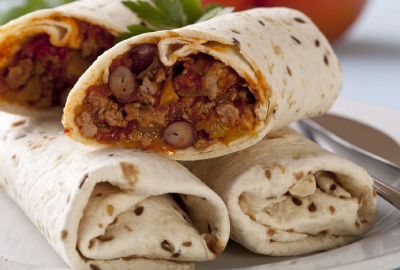
There are various stories about the origin of this dish, but one thing is clear: it is an iconic dish of Chihuahua. Some say that the burrito was invented during the Mexican Revolution by a man named Juan Méndez, who used his donkey to sell rolled tacos with a filling inside. However, the burrito was already described in Félix Ramos y Duarte’s 1895 Diccionario de Mejicanismos as a rolled tortilla with a filling, so this story may not be accurate. In any case, the burrito is a popular and delicious dish that has spread beyond the borders of Chihuahua.
One of its variants is the percherón donkey, invented in the state of Sonora and prepared with a large tortilla and a filling of grilled or roasted meat, avocado, mayonnaise, and cheese, usually Chihuahua or Manchego. The large tortillas of the Percheron donkey are called “sobaqueras”. Burritos are usually made with flour tortillas and filled with beans, Chihuahua or Manchego cheese, beef or pork. When traveling to Chihuahua, be sure to try the burritos that are recognized worldwide for being an exquisite typical dish in Mexico.
The beef used for this dish is a specialty of Chihuahua and is characterized by including spicy chili and rice. The history of the burrito is fascinating because it began when some Mexican citizens fled to the United States during the Mexican Revolution in 1910, and they used wheat tortillas to wrap their food to keep it warm. Today, you can find a variety of burritos that suit your palate and enjoy the typical flour tortillas from the region.
Chihuahuan beef broth
It is a traditional dish that is widely consumed in this region. It is made with beef shank, a part of the legs between the calf and hamstring, which includes the bone with marrow and the meat around it. The broth is prepared with chile de árbol, onion, skinless and crushed tomato, bay leaf, carrot, potato, cabbage, parsley, and dill.
The chamorro should be softened in a pressure cooker beforehand to shorten the cooking time. This beef broth is known to miraculously recover many Chihuahuans who drink too much during festive events and celebrations of the state, such as the Santa Rita fairs, the Matachic festival, or the day of Santa Bárbara.
Chicken pie
One of the most popular dishes in Chihuahua is the chicken pie, a dish that combines different ingredients from various regions in Mexico. Although its exact origin is uncertain, some historians believe that it could have been created in Oaxaca or Baja California. The recipe consists of corn tortillas that are layered with a tomato and poblano chili sauce, corn grains, shredded chicken, sour cream, and Chihuahua cheese, which is typical of the region.
The chicken pie is then baked in the oven for approximately 25 minutes until golden brown. This dish can also be made with other fillings and sauces, such as meat or pork, and regional vegetables. It is a perfect option for a family meal and is usually served on special occasions or events in Chihuahua.
Grilled meat
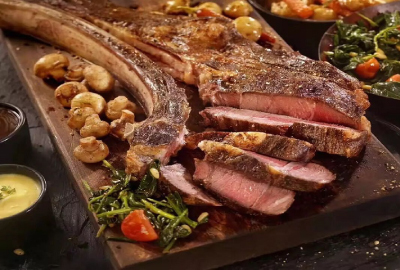
Chihuahua is the largest federal entity in Mexico and is known for its cattle exports. The region’s rugged terrain and mountains make agricultural activities difficult, but allow for extensive livestock farming, which has become a mainstay of its economy. Meat has always been an essential component of the Chihuahuan diet, and the climate of extreme temperature variations between hot and cold led the first settlers to develop conservation methods such as dehydration by drying in the sun.
The barbecue is a classic Chihuahuan dish that can be made with any cut of meat, such as flank steak, T-bone, Top Sirloin, rib, needle, picaña, and ribeye. The traditional method of grilling the meat over mesquite wood is still used today, and the fattiest meat is cooked first, followed by the leaner cuts. The dish is typically served with potatoes, onions, roasted chilaca pepper, pico de gallo salsa, and guacamole.
Grilled meats are a must-try when visiting Chihuahua, and they make for a great afternoon meal when accompanied by onions, grilled sausages, potatoes, spicy sauce, and beer.
Chilaca chile
The chilaca pepper is another star component of Chihuahuan cuisine. This fresh chili pepper is called pasilla or black when dried and can reach up to 22 cm in length. It is cultivated in various areas of Chihuahua, especially in the Delicias municipality, located in the central part of the state. The chilaca pepper is not as hot as other Mexican chiles, making it perfect for stuffing.
It is used to prepare the popular chile slices with cream, tomato, onion, and cheese, and to make various molcajete sauces. The pasilla chili, obtained by drying the chilaca in the sun for at least a month, is also a part of the traditional gastronomy of Chihuahua. The state uses a particular method of dehydration; they first roast the chili to remove the skin and then dry it in the sun.
One of the typical Chihuahuan dishes that uses pasilla chili is a meat stew with onion and tomatoes. Its name, pasilla, is due to the fact that it takes on the appearance of a plum or a raisin when dried, and it is also called black or dark due to its dark color.
Chihuahua-style Discada Tacos
One of the most iconic dishes of Chihuahua is the discada taco, a filling and satisfying meal that is perfect for a day spent working in the field. Traditionally prepared over a wood fire on disused plow disks, the discada is made with chopped beef and bacon, chorizos, jalapeño peppers, tomato, onion, garlic, pepper, and salt. For added flavor, dark beer and white tequila are sometimes added while cooking.
While finding a plow disk to cook the discada may not be easy, it can be made on a griddle or a large frying pan. Once the stew is cooked, it is served on warm corn tortillas, resulting in delicious discada tacos. This dish has a rich history that dates back to colonial and viceroyalty times, when agriculture was the primary activity in northern Mexico. In the past, deer meat was widely used, adding to the dish’s unique flavor.
Machaca
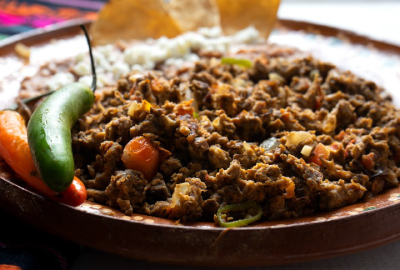
Another beloved Chihuahuan dish is machaca, a dried and shredded beef jerky that has been softened and crumbled with stones. This popular breakfast dish is prepared by making a stir-fry of onion, tomatoes, and jalapeño peppers, then adding the dried and shredded meat. Finally, slightly beaten eggs are incorporated and cooked until tender, seasoning to taste.
Machaca was once a staple food for people traveling through the vast territories of northern Mexico, who would bring it along on their journeys to eat with wild quail eggs. Today, it is a simple yet flavorful dish that is often accompanied by eggs, avocado, and flour tortillas, making for a complete and cheap meal. The mix of flavors in machaca is an explosion for the palate, with onion, hot chili peppers, tomato sauce, and the rich flavor of beef jerky.
It can be enjoyed as a burrito or wrapped in a fajita. Whether cooked at home or enjoyed at a local eatery in the center of Chihuahua, machaca is a nutritious and easy-to-prepare option that is sure to impress.
Chile Colorado Tacos with Dried Meat
Chile Colorado is a versatile ingredient that is used in a variety of dishes throughout Mexico. In Chihuahua, it is combined with dried beef to create a filling for some of the tastiest tacos around. The taco filling is made by cooking dried and shredded meat with potato cubes, salt, and pepper. The sauce is made with red chiles softened in boiling water, then crushed with garlic, pepper, salt, and other seasonings to taste.
The resulting tacos are bursting with the unique flavors of Chihuahuan cuisine, and are simple enough to be prepared at home. Chile Colorado is also known as chilacate in Jalisco and Colima, and largo colorado in Sonora. It is also known as Anaheim chile when fresh, named after the Californian city where it grows well.
Coriander Rainbow Trout
Coriander rainbow trout is a popular dish in Chihuahua and a must-try for any food lover. This freshwater and saltwater species is prized for its flavor and ability to adapt to different habitats, making it a favorite among chefs and home cooks alike. In Chihuahua’s mountains, there is a native species of trout called golden trout that is perfect for eating, but not easily available.
To prepare coriander rainbow trout, the fish is cleaned and butterfly-opened before being baked with a touch of salt. Towards the end of the cooking process, sautéed vegetables such as potatoes, carrots, celery, zucchini, and peppers are added for added flavor and nutrition. To top it off, a warmed and beaten dressing made with fish broth, milk cream, coriander, and salt is poured over the trout when serving.
Chihuahua Cheese
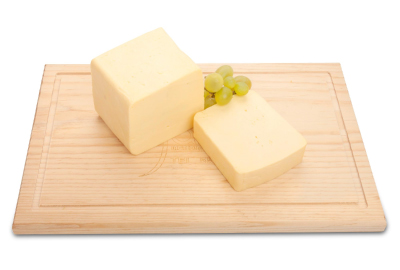
Chihuahua cheese is another emblematic dish of Chihuahuan cuisine. Its origin is linked to the arrival of Mennonite colonists in Chihuahua in the early 1920s. These peaceful Anabaptist Christians brought their agricultural and livestock traditions to Mexico and began producing the cheese that, over time, became known as Chihuahua cheese.
This soft, golden yellow cheese is easy to slice and has a creamy taste and milky aroma. There are two types of Chihuahua cheese: one made with minimally skimmed raw milk and the other made with pasteurized milk. It is widely used to make quesadillas, sandwiches, and cheesecakes, as well as an ingredient in refried beans. The cheese is produced by the Mennonite community and is also known as ranchero cheese.
You can find it in most northern states of Mexico and is used to melt and make quesadillas, as well as to accompany other foods such as chili peppers or cakes.
Pinole Soup
If you are an athlete or simply a health-conscious individual, pinole soup is a great dish to try. This nutritious and antioxidant-rich food is a gastronomic fortune from Mexico that contains high amounts of vitamin B, calcium, iron, and magnesium. It is also an important complement to an athlete’s diet.
To prepare pinole soup, the ground corn grains are turned into flour and mixed with cinnamon. There are different ways to prepare it, but the most common method in northern Mexico is to use the pinole to prepare a hot drink known as atole. This involves heating water with pinole until a thick mixture is obtained, and then adding cinnamon or honey for taste.
In other regions, it is usually prepared as a cool drink called watónali, and you can also prepare cookies with the pinole mixture. These recipes have pre-Hispanic origins and are currently consumed in many countries. The Rarámuris indigenous community is the main consumer of this food, and it is an integral part of Chihuahua’s culture.
Asadero Cheese
Asadero cheese is one of the most popular and representative of the typical foods of Chihuahua. It is a spun fresh cheese that is produced by hand in the state, particularly in the municipality of Villa Ahumada. This cheese is thermally and mechanically processed to align its fibers, giving it a unique texture and flavor. The municipal head, named Villa Ahumada, is the main center of cheese production.
There are two types of artisan asadero cheese: the one made with commercial rennet and the one made with trompillo, a regional wild plant that provides a coagulating enzyme. There are no significant differences in flavor between the two types of cheese, although the one made with trompillo is a little softer.
Asadero cheese is used abundantly in Chihuahuan cuisine to make burritos, tacos montados, quesadillas, and chile rellenos. It is also good for snacking, melted and spread on tortilla chips or cookies. The cheese’s unique flavor and texture make it a must-try for anyone visiting Chihuahua.
Santa Rita Empanadas
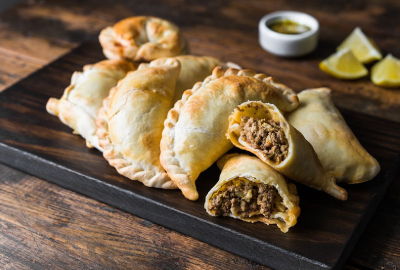
Santa Rita empanadas are a festive and delicious dish that is named after Santa Rita de Casia, the patron saint of the city of Chihuahua, whose day is celebrated on May 22. The dough for the empanadas is prepared with flour, milk, aniseed, and butter, and the unique touch is given by tequesquite, the Mexican mineral salt that has been used since pre-Hispanic times.
The typical filling of the Santa Rita empanadas is made with ground pork loin, lard, onion, raisins, almonds, sugar, ground cinnamon, ground cloves, and salt and pepper to taste. The empanadas are usually stuffed with pork and fried to be served hot and at the moment. Eating some Santa Rita empanadas and accompanying them with a beer is a Chihuahuan tradition that you must try.
The Santa Rita fairs are the most important festivals in Chihuahua and usually run from mid-May to early June. It is an excellent opportunity to enjoy impressive agricultural exhibitions, music, mechanical games, and a gastronomic corridor to eat all the traditional dishes and cravings of the state.
The dish is named after the patron saint of the state of Chihuahua in her honor and is a contrast of flavors between sweet and salty. Its main ingredients are wheat flour dough that is filled with ground meat with almonds and raisins, cooked in the oven, and at the end dusted with sugar and cinnamon.
Chihuahua-Style Beef Birria
Birria is a popular Mexican dish that is traditionally made with lamb or ram meat, but beef and goat can also be used. The meat is marinated with chili peppers, spices, aromatic herbs, and other vegetables, using the most popular ingredients from each region. The marinade is made with a variety of chiles, such as ancho, pasilla, guajillo, puya, among others, as well as oregano, sesame, marjoram, bay leaf, thyme, garlic, pepper, ginger, onion, and tomato.
In its traditional form, birria is cooked slowly in containers embedded in holes made in the ground, surrounded on the bottom and walls with wood-fired embers and covered with maguey leaves. In Chihuahua, beef birria is a common variation of this dish, typically made with beef shoulder or rib, guajillo and pasilla chili peppers, garlic, oregano, thyme, coriander, cinnamon, cloves, pepper, and salt.
The meat is marinated overnight, then slow-cooked until tender. The consommé, or broth, is made with tomatoes and the cooking juice of the meat.
Chacales (Jackals)
Jackals are predatory mammals that live on several continents, but they are not found in America. However, Chihuahuans have their own “jackals,” which are broken grains of corn. Preparing this traditional dish is a laborious process that starts months before the meal is served. The corn is harvested and roasted before being shelled and broken. The broken grains are dried in the sun for at least two months before being prepared in various ways.
To make Chihuahuan-style jackals, the corn is broken up in a grinder without grinding it too much. It is then softened in a pot of water over heat. The jackals are finished cooking in a fried sauce made of red chiles, garlic, salt, and water. The dish is served hot with grated Chihuahua cheese on top. Chacales are commonly enjoyed in the Sierra de Chihuahua and are a popular dish among the locals.
Caldo de Oso (Bear broth)
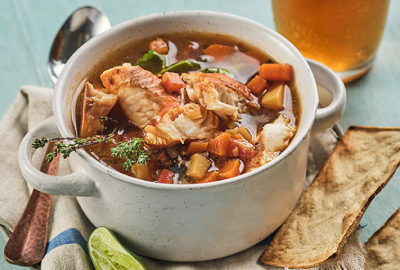
Despite its name, this dish does not contain bear meat. The name “bear broth” comes from the workers who built the La Boquilla dam in Chihuahua. They ate catfish soup daily and named it “hateful broth.” Later, the name changed to “bear broth.” The soup is made with pieces of catfish, dehydrated red chile to give it flavor, and vegetables such as carrots and potatoes. The broth also contains herbs like celery, marjoram, coriander, and bay leaf.
To prepare caldo de oso, the catfish is cut into pieces and seasoned before being browned in butter in the same pot used to make the broth. The fish is then removed from the pot while a tomato, onion, garlic, and green onion sauce is made. Potato and carrot pieces are added before salted water and herbs are mixed in. Once boiling, the fish is returned to the pot and finished cooking. This dish is famous for curing hangovers and is a representative and typical dish of Chihuahuan cuisine.
Beef Tongue in Pipián
Beef tongue is widely used in Mexican cuisine and is eaten in tacos, burritos, and other dishes. The tongue is one of the components of cattle with the most fat and was eaten by prehistoric man for its great caloric intake. In this dish, the tongue is linked to a pre-Hispanic classic of Mexican cuisine: pipián sauce, prepared with pumpkin seeds.
Chihuahua-style pipián or red pipián is made with red chiles that are softened in boiling water and then blended with pumpkin seeds, corn, garlic, salt, and other ingredients to taste. Although the most common pipián recipe is with chicken, this Chihuahuan variant with beef tongue is also delicious. The cooked tongue is cleaned and cut into slices before being stewed in the pipián sauce with a little oil or butter. Beef tongue in Pipián is one of the most popular Chihuahuan dishes and can easily be found in most restaurants in the area.
Typical Drinks of CHIHUAHUA
Tejuino
Also known as tesguino, is a corn beer that has been part of the Mexican indigenous culture for centuries. It is a ceremonial and social drink for the Tarahumara or Rarámuris indigenous people who live in the mountains of Chihuahua, Sonora, and Durango, as well as the Huichol or Wixárika people who live in Nayarit, Jalisco, and Zacatecas.
The drink is multi-functional, as it is used as a base for the preparation of natural medicines, consumed as an alcoholic beverage, used as a means of payment, and taken as food by nursing mothers and children. The preparation of tejuino involves allowing corn grains to germinate in a dark environment, then grinding them on a metate and cooking them in water. This preparation is then left to ferment in tesguineras pots for variable periods, which determine its alcohol content.
The low-alcohol tejuino is mixed with piloncillo and consumed like a soft drink. Traditionally, it is served in ladles made from gourds. In Chihuahua, tejuino is part of the daily life of people and of their daily diet. It is an excellent example of the importance of corn in Mexican gastronomy and the fundamental role it plays in the indigenous culture of the country.
Izquiate, or fresh chia water
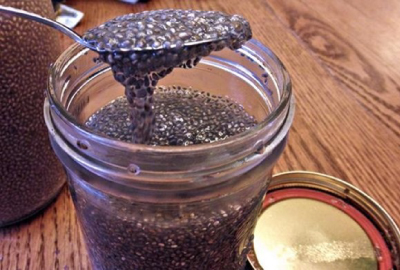
This is another refreshing and nutritious drink from Chihuahua. This natural fresh water is made from chia seeds that are soaked in water for at least an hour and mixed with lemon and sugar. Chia seeds are a superfood derived from the plant of the same name, which was cultivated by the Aztecs and was an important component of the pre-Hispanic diet in Central America. Izquiate is one of the best options for non-alcoholic drinks in the hot weather of Chihuahua.
This agüita, or little water, contains significant amounts of B vitamins, calcium, magnesium, iron, phosphorus, manganese, and zinc, making it a healthy and refreshing beverage. It is part of the daily life of Chihuahuans and has been consumed for centuries, not only in Chihuahua but also in Central America. Its consumption has increased due to the rich properties and benefits that chia contains. The seeds can be found in vegan stores and supermarkets, and the drink is easy to make at home.
Sotol
Sotol is a typical alcoholic drink from northern Mexico and a part of the typical food of Chihuahua. This distilled drink is made from the head or pineapple of the sereque plant, which is endemic not only to Chihuahua but also to Coahuila and Durango. Sotol has a flavor and texture similar to Tequila and Mezcal, and like these drinks, it is aged in barrels. To soften the flavor, raisins and nuts are added.
Chihuahua is one of the largest producers of sotol in Mexico, and the drink is produced by hand. It has an alcohol content of between 38 and 45 degrees, making it a potent beverage. Sotol is a drink for the strong and a perfect example of the unique alcoholic drinks from Chihuahua. Various properties are attributed to this emblematic Chihuahua drink, making it a must-try when visiting the region.
Milk with Pinole
If you’re looking for a sweet and nutritious snack, then Milk with Pinole is a perfect option. Pinole is a pre-Hispanic food made by roasting corn and then grinding it with cinnamon and sugar. It is a natural source of sugar that contains few calories and high amounts of iron. Pinole also has antioxidants that help fight the production of cancer cells. You can use Pinole to prepare different types of hot or cold drinks. Some people like to add a little cocoa and cinnamon, while others prefer a touch of anise. You can even ferment these ingredients to make a low-alcohol beer that you can enjoy with a little lemon.
One of the most popular Pinole-based drinks is Atole. Atole is a traditional Chihuahua dessert that is sweetened with sugar and made with milk. You can also add the fruits of your choice to enhance its flavor. Atole is perfect for breakfast or a snack, and you can pair it with bread or cookies that are not very sweet. For a healthier option, you can use Pinolillo instead of sugar.
Tepache
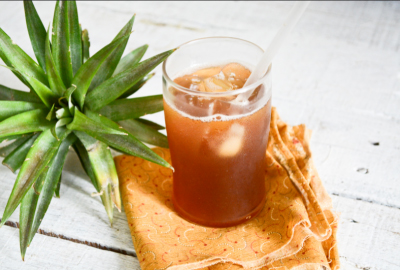
Tepache is a fermented drink that originated in pre-Columbian times and is now popular in Chihuahua and other regions of Mexico. This drink is made by fermenting pineapple, cinnamon, and pepper. It has a low alcohol level due to its short fermentation time and is perfect for quenching your thirst and refreshing yourself in a hot environment.
Tepache has a sweet flavor and a reddish-amber yellow tone. It is often compared to beer due to its taste but is distinctively different. The indigenous communities of Chihuahua and Veracruz used to prepare tepache with corn seeds and a higher degree of alcohol for rituals. Nowadays, you can make it using various fruits like guava or apple.
Preparing Tepache is easy, and you can find it in bars and cocktail shakers throughout Mexico. However, there are no Tepache factories, so you won’t find it bottled. The longer you let it ferment, the more bitter and alcoholic it becomes.
Coriander Atole
Atole is a staple in Mexican cuisine, and there are countless variations of this corn and milk-based drink. One such variation that is specific to the Chihuahuan culture is Coriander Atole. Coriander Atole is made with coriander seeds, sugar, and salt to taste. This cocktail has its origins in the Santa Bárbara region and has been around for centuries. It was originally consumed by ranchers who needed good nutrients to fuel their long trips transporting metals from the mines.
Coriander Atole is not only delicious but also has several health benefits. Coriander is a natural detoxifier and is rich in antioxidants that help boost your immune system. It also has anti-inflammatory properties that can help alleviate the symptoms of arthritis and joint pain. In addition to coriander, other healthy ingredients like lentils are also used to make this ancient and healthy drink.
Typical Sweets and Desserts of CHIHUAHUA
Harinillas
Harinillas are one of the most beloved sweets of Chihuahua, especially during Lent and Holy Week. These pinole corn cookies have been a part of the indigenous diet in pre-Hispanic Mexico. The typical harinillas are made with a mixture of pinole and wheat flour and are shaped like round and flat cookies, although there are those who make them square, rhomboid and other shapes.
The sweetness of the middlings is provided by piloncillo and its tasty aroma is contributed by cloves and cinnamon. Traditionally, they are cooked in earth ovens in the patios of the houses. When there are a few days left before the beginning of Lent, it is possible to see many Chihuahuans repairing and preparing their earthen ovens to prepare the harinillas and other typical dishes of the Lenten season and the Greater Week.
Jamoncillo
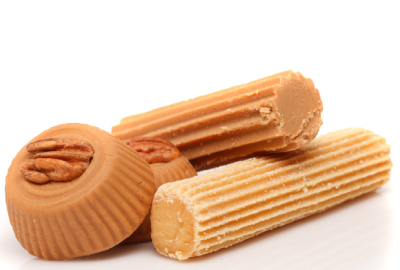
Another popular sweet in Chihuahua is jamoncillo. This light brown, milk and sugar candy is common in Chihuahua and other northern states of Mexico. The most famous are those of Hidalgo del Parral, a historic Chihuahuan city where several important episodes of the Mexican Revolution took place, including the assassination of Pancho Villa. This town is known for its fantastic sweet shop. Making hams is very easy. You just have to put whole cow’s milk, sugar, honey, vanilla extract and a pinch of baking soda in a pot.
The mixture is cooked over medium heat and when cool enough to handle, it forms into little sticks or cones of candy. The typical hams have grooves that are made with a toothpick. If you visit a state in the north of Mexico you can try jamoncillos or also known as dulces de leche that are typical in this region of the country and you can find them in every corner and in all sweet shops.
Capirotada
Capirotada is a traditional dessert from Chihuahua and other Mexican states, made with bread, nuts, fruit, brown sugar, and cheese, although the recipe varies from place to place. It is a sweet prepared particularly in Lent and Easter. A typical Chihuahuan capirotada is made with hard bolillos that are sliced and browned in butter. Then a syrup is prepared with piloncillo, cinnamon and dry sherry wine. A baking dish is greased and layers of bread, Chihuahua cheese, raisins and dried fruits (walnuts, almonds, peanuts) are alternated.
Finally, it is covered with the syrup and baked. The capirotada is also typical of many other Mexican states (Durango, Nayarit, Sonora, Zacatecas, Nuevo León, among others) and the North American state of New Mexico. Each federal entity has its own particular recipe, which includes ingredients such as plantain, guava, biznaga, coconut, tomato, onion, meringue, and various cheeses.
Chihuahua-Style Apple Pie
It is said that “Chihuahua smells like apple,” and this statement is not far from the truth. Chihuahua is the main producer of apples in Mexico, accounting for 85% of the total production. The state boasts more than 33,000 apple orchards in municipalities like Cuauhtémoc, Guerrero, and Carichí, where the ideal climate, latitude, and altitude conditions make it possible to grow sweet and juicy apples that are perfect for various recipes, including apple pie.
To make Chihuahua-style apple pie, sliced apples are mixed with sugar, flour, and cinnamon, and placed in a pie mold. The mold is then covered with a crust made of flour, baking powder, butter, beaten egg, a touch of vinegar, and cold water. The pie is baked to perfection and served warm.
Orejones de Frutas (Dried Apricots)
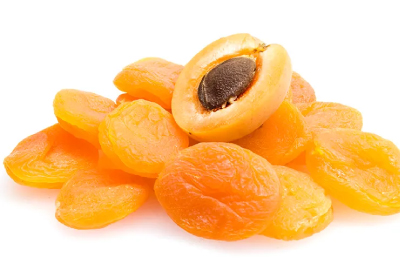
Dried apricots are an excellent way to preserve seasonal fruits and enjoy their benefits for a healthy diet. Dried apricots are fruits that have been dehydrated in the sun or through artificial means, which results in a concentration of their sweetness and nutrients. In Chihuahua, dried apricots made from apples are a popular option due to the abundance of the fruit in the state.
Dried apricots are not only healthy but also tasty, and children love them because they resemble gummies. They are a great source of vitamins and fiber, making them an excellent option for a healthier diet, especially for children. Dried apricots can be incorporated into various dishes, such as salads, meat dishes, pastas, and desserts. They are also very popular during Christmas time in Mexico.
Quince Caramel
Quince is another fruit that grows well in Chihuahua, especially in the municipalities of Allende and Aldama, where there is an artisan tradition of making jams and cajetas or ates. Quince paste is a sweet that originated in Portugal and Spain, and the conquistadors brought it to America. It is made by mixing equal parts of quince pulp and sugar, which are cooked until a smooth mixture is obtained. The mixture is then allowed to cool and is chopped into bars that are known as cajetas.
Although guava and quince are often referred to as a single fruit, they are two different species. Guava is richer in vitamins, while quince contains more natural sugars, making it a better choice for making sweets.
Torrejas
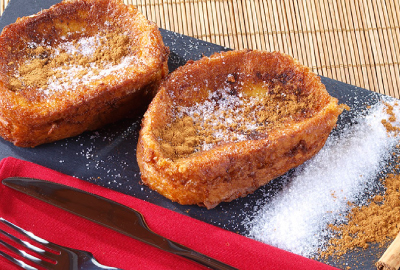
Another typical dessert of Chihuahua is the torrejas, which has Spanish origins and is traditionally consumed during Lent and Christmas. It is made by soaking slices of bread in wine or milk, coating them with egg, and frying them before being sweetened with honey.
In Chihuahua, torrejas are often dusted with toasted sesame seeds and can be made using a variety of ingredients such as apples, shrimp, and beans. The apple torrejas, in particular, are a must-try dessert in Chihuahua, as the state is renowned for its delicious apples.
To prepare them, simply slice the apples, wrap them in sugar and cinnamon, dip them in honey, and fry them. With such a large variety of torrejas to choose from, you’ll be spoilt for choice and may find yourself wanting to try them all.
Walnut Pie
One of the most famous traditional desserts of Chihuahua is the walnut pie. Although it has been prepared in the region for many years, its origins can be traced back to the United States and France. Frenchmen who arrived in New Orleans discovered pecans, which are the main ingredient in this pie, and brought the recipe with them.
The Mexicans later adapted the recipe to their own tastes, incorporating rum and corn syrup. To make walnut pie, you will need flour, sugar, butter, eggs, pecans, and a touch of honey and corn syrup. Some variations of the recipe include adding chocolate or whiskey to give the pie a different flavor.
In Chihuahua, it is typically served with whipped cream and is a popular choice for festive meals such as Christmas dinners. Whether you have a sweet tooth or not, the walnut pie is sure to satisfy your taste buds and provide a glimpse into the rich history of the region.
More Tourist Attractions in CHIHUAHUA
Guided Tours in CHIHUAHUA
Flights & Hotels in CHIHUAHUA
More Tourist Attractions in MEXICO

Archaeological Sites
The Archaeological Zones are the cultural past of every Mexican. You will be amazed at the ambient, nature and the environment that surrounds them. Climbing to the top or being around it will take us back in time to admire every detail. México is a country of culture and traditions, many of which we have inherited from the pre-Hispanic inhabitants of this vast territory, although it is true that there were more settlements in the central and southern part of the country, it is also possible to find some archaeological remains in the north.
… Read More

Ecotourism and Adventure
Mexico is one of the best countries for Ecotourism as it has a great variety of flora and fauna, as well as a large number of refuges for extraordinary species. You can enjoy recreational activities of appreciation and knowledge of nature through contact with it, such as: stargazing, observation of natural attractions, wildlife and bird watching. Throughout México there are more than 176 protected natural areas, 5 of them considered by UNESCO as Natural Heritage of Humanity. Just for this and much more, we believe that Mexico is a Paradise for Ecotourism.… Read More

Capital Cities
Folklore, gastronomy, literary culture, art and exhibitions, is what you will find in the capitals of the states of Mexico. To the north, colonial Mexico, Puebla, Guadalajara, Guanajuato, the Sonoran desert and the California peninsula. To the east Veracruz and the gulf. To the west Acapulco, Oaxaca and Tuxtla Gutiérrez. And to the south the Riviera Maya and the pyramids of Chichén-Itzá, Tulúm and Cobá in Yucatán, Palenque in Chiapas, the cenotes, and the Central American jungles.… Read More

Gastronomy
The Gastronomy of Mexico has a great diversity of typical dishes, which is why it was recognized by UNESCO as Intangible Heritage of Humanity. The basic and representative ingredients of Mexican dishes are: corn, coriander, chili, beans, piloncillo, nopal and tomato. Mexican cuisine is also characterized by its sauces, which serve as an accompaniment to traditional dishes, prepared based on spices.… Read More

States Of Mexico
Mexico has an incredible diversity of landscapes, where the beauty of its beaches, internationally recognized, stands out. In its vast territory of coasts, there are beaches of unparalleled beauty, and colorful landscapes. A large network of first-class hotels and tourist services is available to visitors to these beaches. Mexico is also mystical places, dotted with archaeological testimonies inherited from its original inhabitants. Monuments made by the Mayas, Aztecs and Toltecs are located in magical landscapes, like lighthouses in an ocean of natural beauty. They offer visitors buildings that tell their history, and museums that collect their cultural heritage. And that keep alive ancestral traditions, in ceremonies and festivals, where you can enjoy cultural activities and entertainment.… Read More

Beaches
On the Beaches of Mexico you can immerse yourself in the intense blue ocean of the Pacific bays, sunbathe on the shore of the warm and transparent waves of the Caribbean Sea in Quintana Roo or even rest on the beautiful coasts of the Gulf of Mexico. Mexican beaches hide wonderful secrets for the traveler. By visiting them, in addition to enjoying the excellent climate and water activities, you can discover splendid archaeological sites and interesting colonial cities without traveling long distances.… Read More

Magical Towns
A Magical Town is a place with symbols and legends, towns with history that in many cases have been the scene of transcendent events for our country, they are places that show the national identity in each of its corners, with a magic that emanates from its attractions ; visiting them is an opportunity to discover the charm of Mexico. The Magical Towns Program contributes to revalue a set of populations in the country that have always been in the collective imagination of the nation and that represent fresh and varied alternatives for national and foreign visitors. A town that through time and in the face of modernity, has conserved, valued and defended its historical, cultural and natural heritage; and manifests it in various expressions through its tangible and intangible heritage. A Magical Town is a town that has unique, symbolic attributes, authentic stories, transcendent events, everyday life, which means a great opportunity for tourist use, taking into account the motivations and needs of travelers.… Read More

Traditions in Mexico
It is practically impossible to make a meticulous, and above all, accurate selection of the places to visit in Mexico. Each place that our country houses is unique and beautiful in its own way. Mexico, with its nearly 2 million km², has a large number of scenarios to offer, as well as endless activities to do. Do not lose your way and enter the places to visit in Mexico. In Mexico, apart from the beaches and its famous archaeological sites, there are many other really interesting sites and activities that you should know. In the surroundings of the main cities you will find places full of culture and tradition, where you can spend relaxing, interesting and fun vacations. On your trip through Mexico you cannot stop obtaining souvenirs, the crafts that are made here are of the highest quality and recognized worldwide. A shopping tour cannot be missed.… Read More

